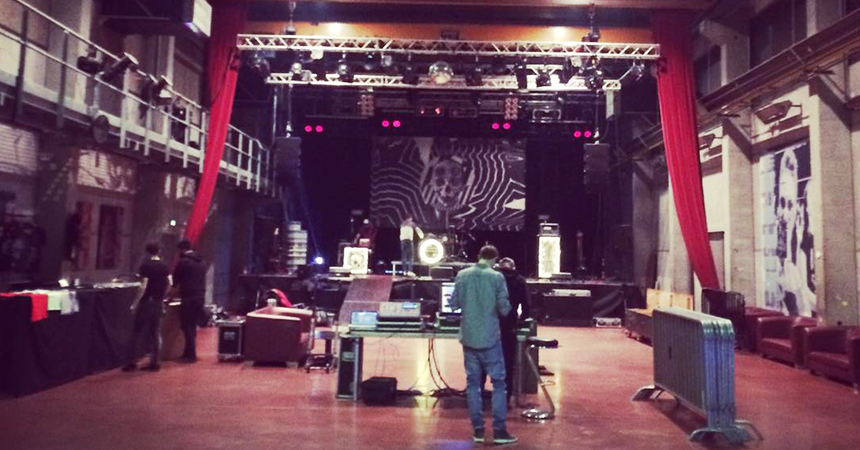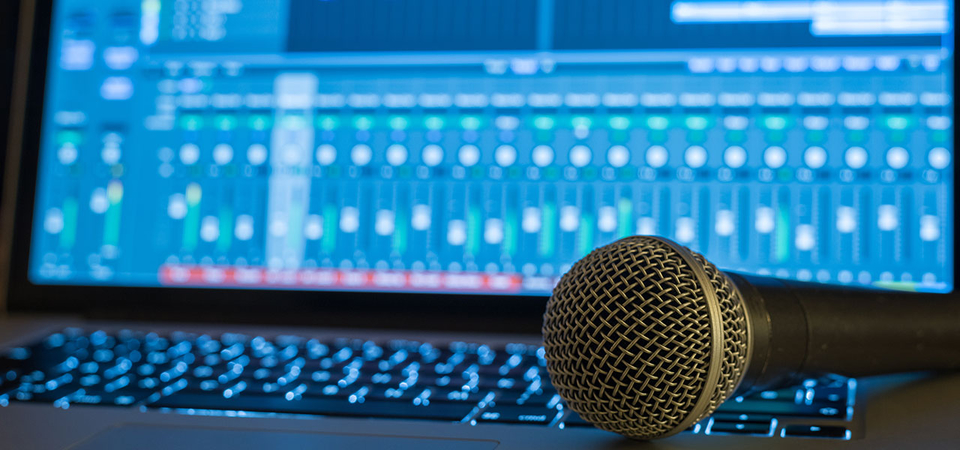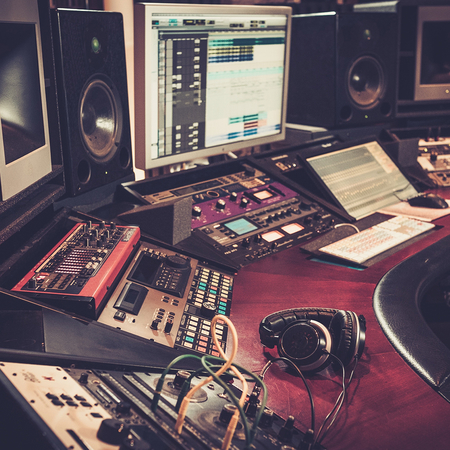
Farewell to feedback
How to prevent annoying squealing on stage and in the rehearsal room
Most of us have experienced it ourselves at concerts: The band comes on stage ready to get started, but there's feedback. If the band doesn't get the feedback under control immediately, it's not nice. We perceive the squealing as very unpleasant. In the worst case, the atmosphere is ruined. Especially as a musician, you notice feedback even more directly and intensely. We spoke to Maurice, singer of the Aachen band Liger, and singer and guitarist Jesse Garon from the Hamburg band Sloppy Joe's. They give practical tips from their day-to-day band experience and tell you what you should consider to avoid feedback.
What interests you especially?
This article was created with the kind support of Johannes Komarek, www.mix4munich.de
Feedback – anything but positive
The unwanted whistling mainly occurs when a microphone captures the higher-level signal from a monitor speaker. It emits the signal, recaptures it, emits it again, and so on. This ping-pong can escalate and quickly become loud and annoying. In practice it looks like this:
Jesse Garon,
Sloppy Joe’s
"A feedback loop is generated when the sound from the vocal microphonesis reflected. So not only the vocals, but also the guitar amp, for example, which is then captured by the vocal microphone. Or when the drums or the guitar are coupled via the microphone. If this is emitted through the PA system it can create a sort of loop."
In other words: Microphones pick up a signal that is amplified via the PA system and monitors. The amplified signal goes back to the microphone, is picked up again, and so on. That's why we also talk about a "feedback loop", but we have to make a technical distinction:
The amplification of the signal from the microphone via the mixer and power amplifier to the speakers is forward gain.
The weakening of the signal from the speaker back to the microphone (often reflected off walls) is backward attenuation. The fact that the microphone has a polar pattern and that the insensitive side of the microphone is turned towards the monitor speaker contributes to backward attenuation.
A feedback loop is created when the forward gain is higher than the backward attenuation.
Feedback can be avoided using a noise gate. Caution: If other signals from the stage open the noise gate, these signals would enable build-up and thereby trigger feedback.
Mute all open microphones that are not currently in use. Or use noise gates. In this way, you can avoid feedback.
Five tips on how to avoid feedback in the rehearsal room and on stage
Even professionals can experience feedback. Through years of practice in the rehearsal room and numerous live performances, Sloppy Joe's and Liger now know how to avoid feedback. This is important not only for your hearing, but also to prevent damage to your equipment. With speakers, the coil can get too hot inside or hit the housing and break as a result.
1. Volume – make everything as quiet as possible.
Sounds paradoxical. Especially if you're dedicated to loud rock music. And particularly for beginners who are eager to make a big impact. Lower volume will benefit both you as a band and your hearing in the long term.
Jesse Garon,
Sloppy Joe’s
"Turn the instruments down during rehearsals and sound checks. Don't turn the amps fully up because you want to be as loud as possible. Firstly, you don't hear yourself that well, and secondly, it quickly generates feedback. It's the same scenario on stage when the monitor speakers are too loud. It doesn't have to be like that, especially here, because the stage loudspeakers are miked [###Link zu: www.img-stageline.de/magazin/mikrofonierung] . So just playing a little bit quieter really helps. It's not cool, I know, but it pays off later if it gives your hearing a bit of protection."
Maurice,
Liger
"Always start cautiously and use low volume at the beginning. So start quietly first and then slowly turn it up. Don't just turn everything up to the max to see if there's still something quietly slumbering somewhere. I suffered slight hearing loss from doing that. Therefore: Don't make "loud" the priority, but find a good combination. Just enough that you can hear everything well, but your ears remain intact."
Jesse Garon,
Sloppy Joe’s
"A bass amplifier doesn't have to be loud either. This can be sent via the DI Out using a DI box directly to the mixer. So use the minimum volume limit. This is the perfect way to avoid feedback on stage. That's why many bands usually have a plexiglass booth around the drums. So that the hissing sounds of the cymbals don't spread as much and aren't emitted via the vocal microphones, which can also result in feedback."
2. Set-up – consider the alignment of monitor speakers and microphones
In addition to the volume, your set-up, that of your microphones and your monitor speakers can prevent feedback. This has to do with how sound propagates in the room. And how your microphones capture the signals.
Maurice,
Liger
"For our performances we typically set up in a certain way simply because that's what we were used to: We put the speaker on the floor behind us and we played. In other words, the speakers were positioned in such a way that they radiate from behind us at knee or hip height, which makes no sense. As a result, the guitarist kept turning the volume up because he couldn't hear himself. This resulted in the bass player turning up louder and louder because he couldn't hear himself, and at some point you could no longer hear the vocals. That's why we now use tripods, on which the speakers are placed at a slight angle. They then radiate upwards so that you can hear sound from them. It's best to turn them in a bit too, so everyone can hear without having to turn it up really loud."
Position yourselves in the rehearsal room in the same way as later on stage. Then you'll be more familiar with the set-up.
Jesse Garon,
Sloppy Joe’s
"We set up our backline in the rehearsal room as if we were on stage. It helps a lot to position the speakers on the left and right. And turn them in a bit so they're feeding into the vocal microphones from the side and not from the back. We take both to concerts if we can't play with in-ear monitoring."
2.1 I think my microphone is whistling! How the polar pattern plays a role
You've probably noticed that the microphone starts to whistle as it gets closer to the speaker. Whether and how strong a vocal microphone captures a signal also depends on its polar pattern. That is the direction it "listens" in. For example, if its less sensitive side points towards the monitor speaker, it is less prone to feedback.
Jesse Garon,
Sloppy Joe’s
"It also depends a bit on whether the microphone is really able to pass through a signal neutrally, i.e. has no particular peaks in the frequency response. Microphones are really different in this respect and you simply have to try out microphone by microphone. It is best to try a few different microphones until you get it right."
2.2 Room acoustics – even carpets can sweat
You've already taken account of the volume, your set-up and the position in relation to each other and there's still squealing? Always remember that the sound of a signal can also be reflected by objects or walls in a room, along the lines of room modes. You can use absorbers to damp the reflections.
Maurice,
Liger
"We had our rehearsal room (a former kitchen) completely covered with carpets – on the floor and on every wall to damp the sound as effectively as possible. Later, we had one wall covered with foam rubber, one with carpet and one uncovered. But then the room was dead because there was no sound anymore. Today, we have OSB on the floor, some carpets and sound damping in the right places. Find a middle ground. And be careful: When you rehearse, you move around a lot. If there isn't a window nearby, rehearsal rooms quickly become stuffy. We ruined our banner because it got mouldy behind it."
Jesse Garon,
Sloppy Joe’s
"Coupling between the monitor speaker and vocal microphoneis the classic and most unpleasant situation. This often also depends on the locations in which you play. There are some that have a very high ceiling. Then there are some where the ceiling is a bit lower. Or there are windows or the walls are made of stone. These surfaces may strongly reflect the sound. Incidentally, it is often strongest at frequencies that are prone to feedback anyway. This can lead to certain frequencies reacting extremely sensitively."
3. Tame annoying frequencies using the equalizer
Certain frequencies can be more feedback-prone than others. During the on-stage sound check, a sound engineer will be present to assist in controlling the pitches. In the rehearsal room, you can optimally set up an equalizer.
Jesse Garon,
Sloppy Joe’s
"When attempting to get the ringing under control, it makes sense to look closely at the equalizer. So go through the individual frequency bands and slide them up and down. See where it squeals the strongest. Then just remove the affected frequency band somewhat. The frequency response of the vocal microphone is also emitted through a PA system, is possibly connected to a mixer or there is an equalizer in the circuit. You can then ultimately set the frequencies for the microphone to some extent. It often worst at two to four kilohertz."
Create mix and monitor mix
Make it louder until the feedback starts
Use an RTA (Real Time Analyzer) to determine the coupling frequencies and then use the EQ to tame them. The EQ can be graphic, but parametric is better.
Keep increasing the level until it whistles at the next frequency and repeat from there. This way you can reduce the feedback by a few dB.
4. Look at your monitoring solution – monitor speakers vs. in-ear monitoring
If the interaction between vocal microphone and monitor speaker generates feedback, wouldn't it make sense to dispense with monitor speakers? Yes and no. On the one hand, it's a question of cost. The other question is whether the sound engineers are familiar with this. Sloppy Joe's are a trio with vocals and guitar, bass and drums, who prefer to work with in-ear monitoring when possible. Liger is a quartet with vocals, drums, bass and guitar that uses only monitor speakers.
Team monitor speakers
Maurice,
Liger
"What's holding us back from in-ear monitoring is that the live circuit, especially clubs the size we play in, isn't made for it. The fact is that some technicians are not so experienced with in-ear or don't want to make an exception, but they can all work with monitor speakers and are familiar with the local conditions. That's why we prefer to use monitor speakers. Practice and rehearse exactly what you do on stage in the rehearsal room. This will ensure that you're very familiar with monitor speakers and give you confidence during performances."
Team in-ear monitoring
Jesse Garon,
Sloppy Joe’s
"We've had in-ear monitoring for twelve years now. So we send the signal to our ears in the rehearsal room. In the rehearsal room, you really only hear the drums. That's the perfect situation for us because we can hear precisely what we're playing. It's important to simply deliver quality and to be perfect, and that starts in the rehearsal room. Otherwise there'll be a rude awakening on stage."
5. Don't get rattled if things go wrong on stage
Even if Liger and Sloppy Joe's now have a lot of live and rehearsal experience and know how to avoid feedback, the worst case can sometimes occur. But even when the going gets tough, try to stay calm.
Jesse Garon,
Sloppy Joe’s
"I had the most dreadful experience at the Release concert 2016 in Hamburg in front of a sold-out house. The in-house technician on site gave me such massive feedback during the sound check that I almost lost my hearing. And it took almost two hours until we got rid of this squealing. Unfortunately it started again at the beginning of the show. It completely ruined the first three or four songs for us. The worst part is this ringing sound. You mainly notice it via the monitor paths. The audience might not really notice and just wonders: what is that guy doing up there? It's also no fun to sing and have the ringing in your ear all the time. Because as soon as I sang, the feedback was generated. But you should never let something like that upset you. Always finish the show confidently, even if you have technical problems. I then often try to use sign language to alert the sound engineer that I'm having problems and hope he knows what he's doing and solves the problem."
Conclusion: Keep going!
We've now given you many practical tips on how to avoid feedback. If it doesn't work right away, don't be discouraged! Both Sloppy Joe's and Liger took years to find the right set-up for their sound.
Maurice,
Liger
"It took us almost seven years in the rehearsal room until we had the sound set up so that we can hear everything. Another tip I can give you for live performances: Write as much information as possible in the tech rider or technical rider. Then the sound engineers on site can read the tech rider beforehand. They know what's important and what your requirements are, and don't have to do it directly on site. Try to put yourself in the position of the technician and make it as easy as possible for them."
- 25 May, 2019
- 4 March, 2024
- 6 December, 2019



